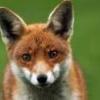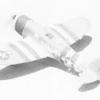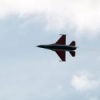Search the Community
Showing results for tags 'Testors'.
-
I'm having a bit of a modelling sabatical at the moment, not a crisis of faith but just felt the need for a short break. That said, I have just finished a Testors 1/32 Kamen Husky that I picked up for a tenner at the excellent little shop at NELSAM in Sunderland. It's standard 70s fare, oversized rivets and minimal detail but presented no great challenge. There was a bit of warpage and flash but nothing you wouldn't expect on a kit this age. I had to do a bit of scratchbuilding to cover up some of the more obvious deficiencies but for the most part it's built OOB. Cheers, Liam
- 32 replies
-
- 24
-

-
I've been using Testors RLM colours in enamel. I love the colours and they spray well when thinned with Testors enamel thinner. BUT....I've found that even after a couple of days the paint can rub off when handling the model. Anyone else experience this? Any possible reasons??? Cheers Bruce
-
I've had this old Testors kit kicking around the stash for ages. I bought it with the intention of building it which kept me from selling it when they were going for 250+ on Ebay because I thought, pffft, who's going to bring out another kit of this ugly looking tractor...hmm Dragon apparently. So since I passed up the chance to make a stonking great profit, I might as well build it. I have made some modifications. I left out most of the glass as looking at pictures these were either destroyed or removed anyway, I took the tools away from the back of the cab and I replaced the horrendous hard rubber tracks in the kit with some workable links from ModelKasten. All the stuff in the back came from the spares box along with the MP-40 holder in the cabin. To this, I added an Italeri ZIS-3 76mm anti tank gun. These weapons were captured by the hundreds and the Germans would often put them straight back into service, with some weapons being modified to fire German 75mm ammunition. For it's age the gun is pretty good and went together with minimal work.
-
I purchased a set of testors acrylic paints a while back. I have used one of the paints - Metallic Silver with code number of 1921575 on my klatest build. I am just about to run out, and can't seem to find this paint as an individual pot. I can only find it in the set, which of course, is about $14, and I haven't touched most of the other colors in the set, so I am going to end up with duplicate colors that will never get used. Does anyone know if Testors offer this particular silver in any other format?
-
This thread will be about the Testors classic SNJ Texan, originally a kit from Hawk. The main reason I went for this kit is that it reminds me of my Top-Flite AT-6 Texan. My main hobby is R/C flying and so the plastic kit building is secondary and mostly a winter activity (not very often good flying conditions in Norway in the wintertime. Dark, cold, wet, windy. Sounds nice, hmm?) Pics of the inspiration: Here is the Testor kit: Onepiece wing, benches instead of seats, quite charming actually.The fit is not bad but i used some filler on the wing and tail + the holes for the landing gear. I will do it gear up. Progress so far:
-
F8F Grumman Bearcat 1:48 Testors The story is that the Grumman Bearcat concept came about during a meeting between US Navy Battle of Midway veteran pilots and the then Grumman Vice President Jake Swirbul. Here it was made clear that power and climb rate were important to the pilots. Grumman then spent some time (approx 18 months) analysing carrier warfare in the Pacific before designing the F8F Bearcat. The specifications for the Bearcat called for it to be able to be operated from the smallest carriers, and to retain the P&W R-2800 engine. The big prop for the engine (measuring 12 4) would require a long landing gear, in order to achieve this the undercarriage used an articulated hydraulic trunion which extended the length of the legs. Additional benefits of this was that when retracted the legs would be housed entirely in the wing, and the wide track helped counteract torque as well as proving a more stable platform for carrier operations. In order to save weight internal fuel was limited to 160 gallons, and armament was only 4 x 50 calibre machine guns. One unique weight saving concept tried on the bearcat was detachable wing tips. If G force was to exceed 7.5g then the tips would snap off still leaving the aircraft capable of flight, and a carrier landing. Unfortunately while this idea worked under controlled conditions, operationally it was a failure. This lead to situations where by only one tip would come off leading to the possibility of a crash. Grumman tried replacing the tips with ones which could be jettisoned by explosives. This system was stopped after the tragic death of a ground crewman after the tips blew off accidently. The Bearcat was also the first US Navy aircraft to feature a bubble canopy giving the pilot an unrestricted 360 degree view. The first production bearcats were delivered in February 1945, with VF-19 going operational in May 1945. However no Bearcat saw any combat in WWII. The first combat would have to wait until 1951 when French Forces were supplied Bearcats for the war in Indochina. When the French left in 1954 28 Bearcats were handed over to the newly formed South Vietnamese Air Force. Another operator in the same area at this time was the Royal Thai Air Force. A production bearcat would set in 1946 a time-to-climb record of 10,000 feet in 94 seconds from a 115ft take off. This would stand for 10 years before being broken by a modern jet aircraft. Due to the excellent performance of the Bearcat they became a popular aircraft for air racing. Stock as well as highly modified Bearcats would dominate the races at Reno for a long time after the aircraft were retired by the military. The Bearcat Conquest I broke the world speed record for Class C-1 with a 3KM record speed of 483.041 MPH. This aircraft now proudly rests in the Smithsonian Air & Space Museum. The Bear cat Rare Bear which was modified with a Skyradier engine set world speed record for Class C-1 with a 3KM record speed of 528.33 MPH in 1989 and broke the 1946 time-to-climb record with 3000m (9842 ft) being reached in 91.9 seconds in 1972. The Kit The kit is a re-boxing of an old Hawk kit from the 1960's. As such it is the technology of the time. You get a plastic bag with an assortment of parts in grey plastic. Details are a strange mix of recessed panel lines on the fuselage, raised panel lines on the wings, with recessed areas for the flight controls. The fabric areas for the control surfaces are actually very well done and restrained. Construction is fairly simple as too be honest there are not a great deal of parts. The instructions would have the modeller first complete the sub assemblies of the drop tanks, bomb, pilots seat, propeller/cowling and wings. Next the fuselage is joined together incorporating the very basic cockpit (a floor and seat).There then seems to be a step missing from the basic instructions as step 3 shows the canopy being added. Between step 2 and 3 say step 2a the modeller will have to add the wongs and completed cowling to the fuselage. To then finish off the landing gear and underwing stores are added. Colour call outs throughout are given in FS numbers and Testors own brand numbers. Canopy The clear parts are a little thick, but seem fairly clear. In this kit they were just inside the bag with all the other parts so that the canopy became detached from the sprue leaving a chunk missing. Decals The decals for the kit are good. They are by Scalemaster and printed by Microscale. They look good solid decals, in register and glossy. Markings are for two aircraft. The First is a Bearcat F8F-2 used by the Naval air Reserve at Glenview IL in 1953. This aicraft features the orange tailband as used on Naval Reserve aircraft at the time, this will need to be painted by the modeller. The second is a civilian version of the bearcat, a G-58A Gulfhawk. Markings are for an overall orange aircraft flown by Major Al Williams. To make this version the modeller will need to make some minor modifications to the kit. These modifications are detailed in the instructions. Conclusion Even though its in no doubt that there are more modern and better kits of the Bearcat out there; with some degree of modelling skill this kit should be able to be made into a good looking model. The addition of decals to make a Gulfhawk is a nice touch. Review sample courtesy of UK distributors for
-
Republic P-47D Thunderbolt Razorback/Bubble Top 1:48 Testors The Republic P-47 Thunderbolt was the Largest heaviest, and most expensive single piston engined aircraft used in WWII. When the airframe was combined with the massive Pratt & Whitney R-2800 Double Wasp engine, eight 50 Calibre machine guns, ammunition & fuel it weighed in at over 8 tons. It could carry an impressive 2500Lb bomb load (half that of a B-17), 5" rockets could also be carried. While it was an effective medium range escort fighter, the Thunderbolt really came into its own as a fighter bomber in both the Pacific and European areas of operation. The P-47 would be used in WWII by the USAAC, The RAF, French, and Russian forces. In addition Brazilian and Mexican units fighting with the US were equipped with P-47s. After WWII the P-47 would go onto serve in a considerable number of Air Forces, including; Brazil, Mexico, Peru, The Dominican Republic and Yugoslavia. In fact many of the surviving P-47s came back from Peru and Yugoslavia. Republic designer Alexander Kartveli designed the P-47 as a successor to the P-35. As far back as 1939 Republic designed the AP-4 powered by a Pratt & Whitney R-1830 with a belly mounted turbocharger. This became the P-43. While working on the P-43 a more powerful version called the AP-10 (Later XP-47) was being considered which was more lightweight with an Allison engine. As the war in Europe progressed both Republic and the USAAC realised that both of these designs were inferior to current German fighters. Republic initially tried to improve the XP-47 which did not come to fruition. Kartveli then came up with an all new and larger fighter which was designated the XP-47B. The new aircraft was of an all metal construction (except fabric tail surfaces), would have elliptical wings. The cockpit was designed to be large and roomy. Power was to come from the P & W R-2800 Double wasp. This engine was to have be a two row 18 cylinder radial devolving 2,000hp. This would be fed from a turbo supercharger system in the fuselage. Refinements of the original design led to the P-47D. This was to be the most produced variant with over 1200 being built. Improvements for the D were; adding more engine cooling flaps at the rear of the cowl to reduce overheating, as well as refinement to the oil, hydraulic and fuel systems. Additional armour was also added for the pilot which would prove useful in the ground attack role. Fuel capacity was also increased, and the bomb racks were made wet to accept additional jettisonable fuel tanks. Upto this point all the aircraft made had been of the Razorback canopy style with the tall spine behind. This limited vision for the pilot. Following on from other aircraft such as the P-51D & later marks of Spitfire, plus the Hawker Typhoon, it was seen that the Bubble canopy was the future for aircraft design. It was found that cutting down the rear fuselage to accommodate the new style canopy resulted in yaw instability. Republic introduced a dorsal fin fillet in running from the radio aerial to vertical tail. As well as being fitted in the factory this was also retrofitted in the field. The last Thunderbolt (a P-47N) was built in October 1945. The Kit The kit is a re-boxing of an old Hawk kit from the 1960's. As such it is the technology of the time. You get a plastic bag with an assortment of parts in grey plastic, and one sprue of black plastic. Details are a mix of mainly raised panel lines with recessed areas for the flight controls. There is a little flash present but on the whole the parts are pretty well moulded fir the time. Construction is fairly simple as too be honest there are not a great deal of parts. The instructions would have the modeller first complete the sub assemblies of the drop tanks, bombs, pilots seat, propeller hub; and landing gear. Next the fuselage is joined together incorporating the very basic cockpit (a floor and seat). Next step is to complete the engine cowling, construct the propeller from separate blades, and complete the engine. Following this the wings need to be completed. The landing gear is added at this time, as seems to be case with a lot of early kits. Following completion of the wings, the completed wings and engine/cowling are added to the fuselage. Following completion of this the appropriate top (Razorback, or bubble top) needs to be added, although I am sure many modellers would do this before adding the wings. Final assembly then consists adding the drop tanks, bomb, and landing gear doors. Colour call outs throughout are given in FS numbers and Testors own brand numbers. Canopy Or should that be canopies as you get both types. They are a little thick but they are well moulded. The modeller should have no problem masking the frame lines. For the bubble top canopy a separate injection bottom part is provided so you wont have to mask this off. Decals The decals for the kit are good. They are by Scalemaster and printed by Microscale. They look good solid decals, in register and glossy. Markings are for two aircraft. The first is a Razorback aircraft from the Famous first and only Black Army Air Corps unit; The Red Tails. This aircraft is natural metal finish with yellow wing bands,and of course a red tail! It was with such aircraft that the 302 Fighter Squadron became the only unit ever to sink a German Destroyer with machine gun fire in Trieste Harbour in 1944. The Second aircraft is the Tiger Stiped camo aircraft of Top USAAF Ace Col. F Gabreski. This aircraft features invasion stripes which the modeller will have to paint. Conclusion Even though its in no doubt that there are more modern and better kits of the P-47 out there; with some degree of modelling skill this kit should be able to be made into a good looking P-47 model. Review sample courtesy of UK distributors for






